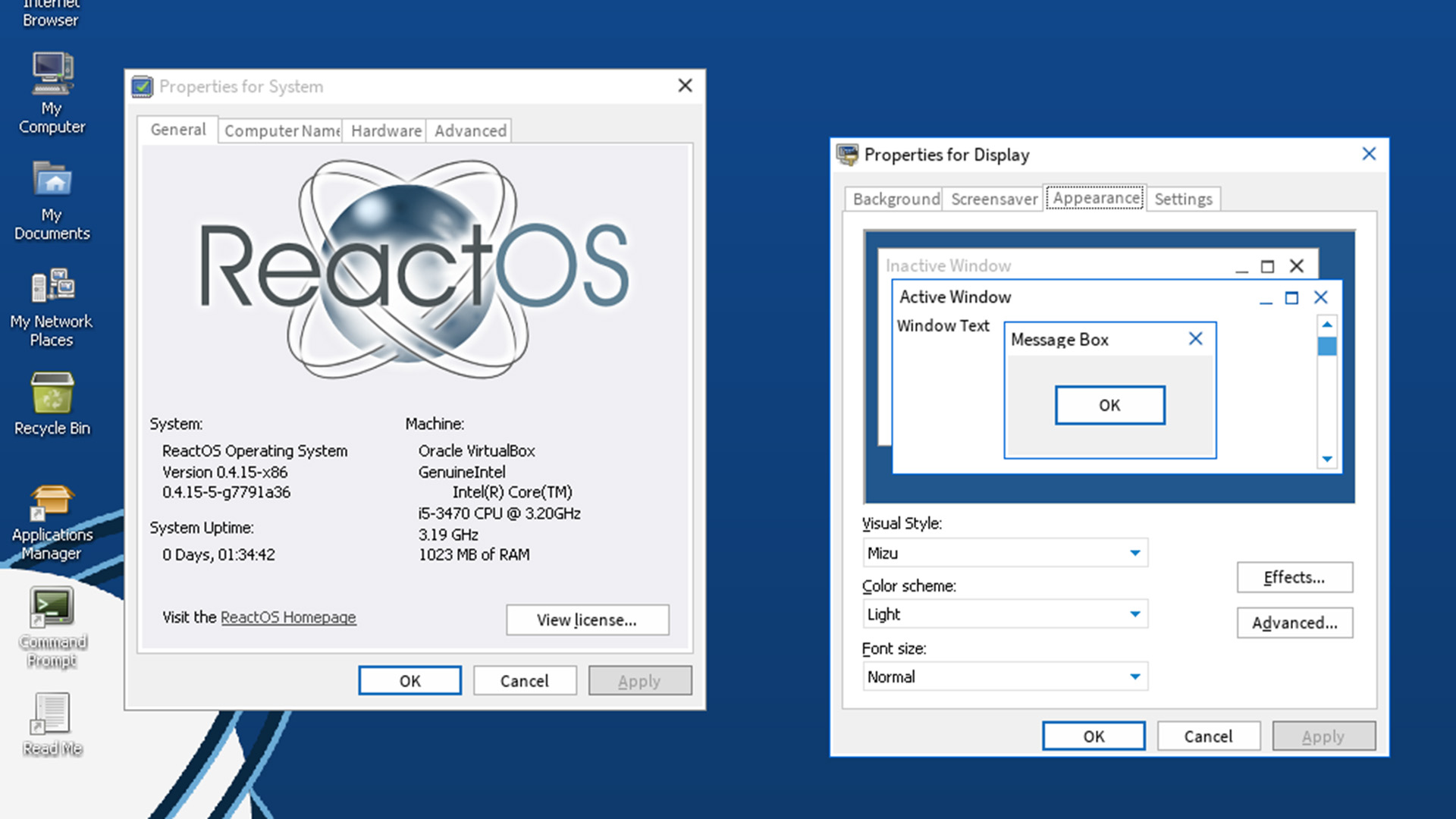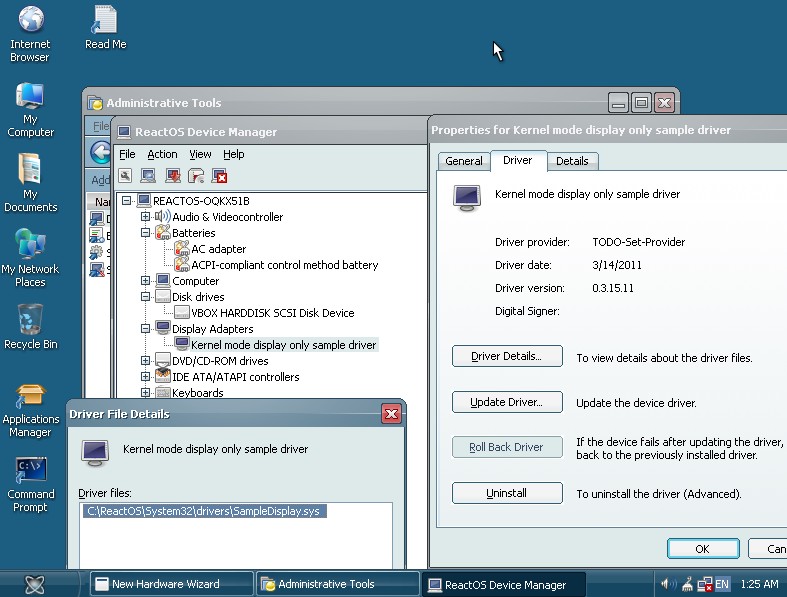As Windows 10 signs off, ReactOS devs are exploring a long-awaited feature in WDDM support — investigation could pave the way for newer GPU hardware compatibility
The Windows-alternative OS makes moves to implement Microsoft's modern display driver model

Support for Windows 10 officially ends today (here's what to do next). In a bit of irony, the developers behind Windows-alternative ReactOS are finally working on introducing the Windows Display Driver Model (WDDM) to the Windows OS alternative as Windows 10 reaches end-of-life. ReactOS dev The_DarkFire_ posted a lengthy blog post, discussing the complications of starting the development of implementing WDDM into ReactOS.
The_DarkFire_ reveals that implementing WDDM into ReactOS has been difficult, due to a lack of video driver documentation for both XDDM and WDDM. However, things changed once open-source GPU drivers began cropping up over the past few years. The introduction of these drivers in the wild has finally given ReactOS devs a better understanding of how these display models operate and a potential way to get WDDM into ReactOS.
It turns out that WDDM relies heavily on the design philosophy behind XDDM to the point where having a solid XDDM base is necessary to support WDDM well. The_DarkFire_ reports that the only thing that has really changed between the two models is the discontinuation of the miniport driver on WDDM. "Outside of the miniport driver, modern Windows still has XDDM remnants all over the place, including mechanisms for WDDM."
To get WDDM into ReactOS, the developer notes that its XDDM stack "must be in great shape," as previously mentioned. Additionally, compiling WDDM drivers for ReactOS was necessary, which was reportedly very straightforward.

The ReactOS dev showed an experimental implementation of WDDM working in ReactOS using a basic display adapter. Not only did it work, but the dev also tried a variety of other vendor-specific GPU drivers, including an Nvidia Windows 7 GPU driver, and discovered they all were providing display out functionality on ReactOS. Best of all, these drivers were capable of driving modern monitors at their full resolution and refresh rates.
XDDM and WDDM are display driver models that define how Windows talks to the GPU. XDDM is a legacy driver model that was used during the Windows XP era. WDDM is the successor to that model, which was introduced with Windows Vista, and has been used ever since.
Moving to WDDM will be important for ReactOS, since it is the default driver model used by all modern Windows operating systems. GPU drivers, as a result, are also written to support WDDM, so getting these drivers to work in ReactOS will be very beneficial in making the Windows OS alternative work on newer GPU hardware. WDDM also supports a variety of modern features XDDM simply doesn't, including the DWM, virtual GPU memory, and user mode functionality (the latter prevents the GPU driver from crashing the entire system if it crashes itself).
Get Tom's Hardware's best news and in-depth reviews, straight to your inbox.
ReactOS is an open-source project that is capable of running Windows software, can run Windows drivers, and looks similar to outgoing iterations of Windows (usually older versions like Windows XP). The project is written completely from scratch, and not based on Linux or Unix, making it a truly unique open-source operating system.
We wouldn't recommend you replace Windows 10 with ReactOS as your daily driver since the project is very much an experimental project, and doesn't have many of the modern features that Windows has. But it is a cool project regardless, and is pretty much the only open-source OS that can natively run Windows apps without compatibility layers.
Follow Tom's Hardware on Google News, or add us as a preferred source, to get our latest news, analysis, & reviews in your feeds.

Aaron Klotz is a contributing writer for Tom’s Hardware, covering news related to computer hardware such as CPUs, and graphics cards.
-
Zaranthos It's only a matter of time and LLM training before AI can fill in the gaps of open source projects that lack developers or simply developer time. AI replacing good developers entirely is probably a long way off but it's already capable of supplementing developer talent. Human talent is still needed to prevent AI slop from potentially ruining good projects though.Reply
I really hope ReactOS continues to make what seems to be pretty rapid progress considering the monumental task of reaching compatibility with a commercial OS that has been around as long as Windows. I've watched the project for years and it has made some impressive progress and exceeded expectations in some ways. I miss many things from the Windows XP days, the UI, the repair install option when Windows was in an unbootable state, the ability to replace the shell explorer.exe with progman to navigate Windows when malware had taken over explorer (thanks to MS largely integrating the browser with the Windows UI), and many other legacy tricks that no longer work on modern Windows. -
bit_user Not to get all conspiratorial, but anyone considering actually running ReactOS should take a good look at not only what its current shortcomings are (last I heard, they're numerous and substantial) but who's supporting a lot of its development. I was intrigued by ReactOS, when I first heard about it. These days, I wouldn't even consider having anything to do with it.Reply
IMO, most use cases are better served by Linux, in conjunction WINE, Samba, etc. -
das_stig You mean the two great humanitarians, uncle Putin and his alleged secret lover Medvedev.Reply